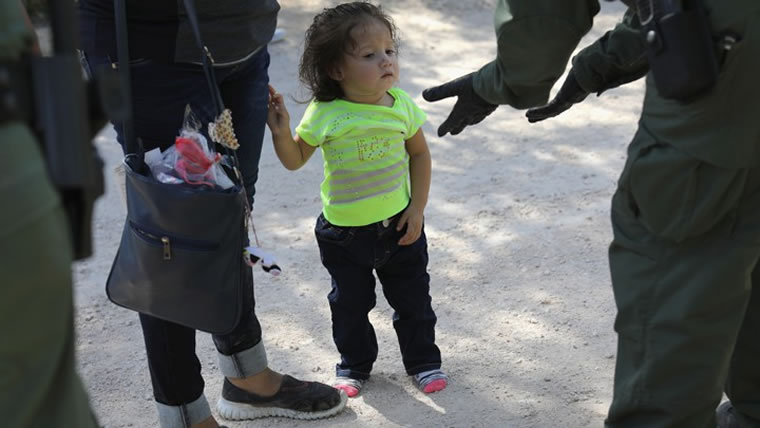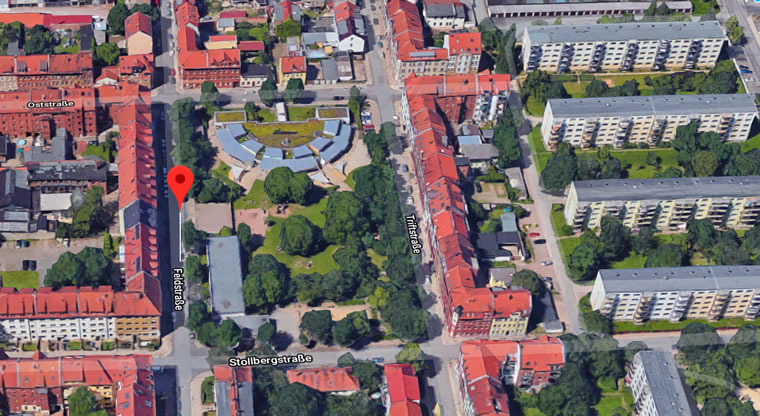
Dear Friend and Reader:
Before I visited Buchenwald, I visited Ilvers Gehoffen.
Everyone has seen photos of concentration camps, but you would not recognize this one. It’s set in a neighborhood outside Erfurt, where the Holocaust is said to have begun. I know there are several places this is claimed to have happened, though the first government killings of anti-fascists were right there, in April 1933, within 12 weeks of when our old friend Adolf ascended to power.
When I was living in Germany, I had a guide who took me and a friend there. We had to ride a few trams to get outside the main city, and where we arrived reminded me of the desolate and crumbling Bronx. From the Google Earth photo above, it has apparently had a facelift.
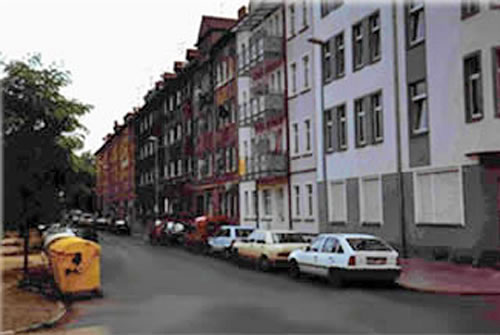
Soon after the Third Reich began, an open yard in the middle of the residential neighborhood was turned into a torture center. It was located right next to a cinema, where well-heeled people came for entertainment, as prisoners hung from posts with their arms stretched behind them. As my guide showed me around the ruins of this place, there was activity in windows five floors above: people were pulling curtains aside and peeking through blinds, looking down at us.
They knew why we were there.
Here is how I reported my experience contemporaneously, in the summer of 1998:
We walk around the block to the right, and behind the row of houses is a large and mostly-vacant city lot. There are a few dilapidated buildings and a lot of old bricks lying around with weeds growing. The metal company’s building is behind a fence; there’s also a brick building that looks like an old slaughterhouse you might see along the lower west side of Manhattan. This was it, this whole place. We are standing in what we believe was the very first Nazi concentration camp.
Normally we are used to seeing the terrible results of the Holocaust; these are the humble and all-but-forgotten beginnings. I doubt whether any other Americans have come here. The warehouses are indeed surrounded by numerous apartment buildings. Bernhard explains that there was an exercise yard for the prisoners, which we are now standing in. And here, he said, as we walk, was a very popular cinema where the good citizens would watch movies right next door to where prisoners were being tortured. We ponder this one for a while. At a little café across the street from the ruins, the Marmara Imbis Turkish Bar and Café, people are drinking coffee on the street.
The psychology becomes very clear. Put the thing where everybody can see it and hear it. And naturally, nobody will complain. And if you lived in one of these apartments, on a hot summer night when the windows were open, you certainly might want another pillow to bury your head. As we walk around surveying the scene, taking photographs, faces start to appear in those windows and eyes stare at us. I know that they know exactly why we are here, and the way they are gawking at us their anger is clear. We are acknowledging what they must somehow both deny and yet live with every day of their lives. Nothing changes here.
Atrocities in Plain Sight
Today, we are dealing with atrocities in plain sight. They are being reported on the nightly news. Children are being separated from their parents, as part of an intentional program allegedly designed to dissuade illegal immigration. This excuse makes no sense; it is an obvious lie, and anyway, it’s not working. People are coming from even worse conditions than they meet in the United States.

Children of migrants, after being separated from their families, are being housed in conditions unsuitable for livestock, which public health codes and FDA regulations say must at least be fed and washed.
Quoting a New York Times report on the child prison in Clint, Texas: observers “found children as young as 8 caring for infants they didn’t know, and toddlers who had relieved themselves in their clothes because they had not been put in diapers.” This is corroborated by other witness accounts, and I have heard worse.
My take is that the Trump administration is using this as an opening to the 2020 election campaign, since there’s a constituency that would indeed be favorably impressed by this kind of conduct. You might ask yourself how, and why, people with children, who love and care for and are attached to their kids, and by all other indications are respectful and intelligent people, could possibly think it’s a good idea to torture people from neighboring countries, paid for by your federal tax dollars.
If you’re thinking, ‘that’s not so bad, it’s not Auschwitz’, I would ask you this: how bad does it have to get?
The theme of my six-month tour of Germany, with my then-lover and collaborator Maria Henzler, was to figure out just how this could have happened in the Nazi era, so recently (then, only 53 years earlier) and in a culture so similar to our own: how it could all take place in plain sight, with everyone fully aware of what was unfolding.
We’ve all heard the stories of the people who pretended not to notice the stench of the crematoria. Well, that’s not so weird if you know that people addressed the problem of a torture center in the middle of their neighborhood by burying their heads in an extra pillow.
Godwin’s Law: Lest We Remember
Have you ever heard of Godwin’s Law? It’s not so much a law as it is an internet precept, involving the tendency of online arguments to eventually degrade into a comparison to Hitler or the Nazis, and the person who makes that comparison loses the argument. I am now making that comparison.
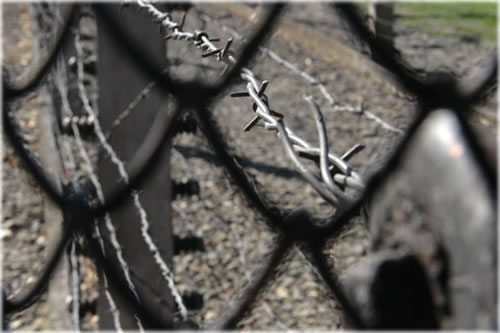
Many of us were troubled when Donald Trump began his election campaign promising to rid society of “bad hombres” — alleged rapists and drug dealers and gang bangers — by which he meant Mexicans and Central Americans. That made a lot of people nervous, such as the ones who could see through it.
Locking up little kids and not providing adequate food, clothing, bathing or toilets, we are a long way from bad hombres, and well into the territory of ethnic cleansing. Everyone south of Texas has been declared non-human, as are those who made it into the Promised Land of the United States of America; the land of ‘give me your hungry, your tired, your poor’.
You might think, gee, this is new and novel. However, you can practically close your eyes in the history section of any library and randomly grab any book and come up with such a thing. And dare we remember that the United States of America was built on murdering the “savage Indians” and that Cortes slaughtered the Aztecs and that American-styled slavery was itself genocide — and now we have a great country.
Few Slave or Indian Memorials in the U.S.
Unlike in Germany or France or the Netherlands, we have nearly no memorials to the Native Americans or the Africans brought here as slaves. There is no “lest we forget,” because forgetting is imperative. In Germany, Buchenwald is preserved and revered as a memorial. The gates are never locked, in honor of the camp having been liberated. We have no such equivalent here. [Note, at press time, we have just learned about this museum in Montgomery. If you know of any others, please let us know and I’ll write about them.]
I am typing this article on ground where Native Americans and African slaves were owned, used and/or killed, and a block from the courthouse where Sojourner Truth argued for the freedom of her son. I live in one of the oldest communities in the colonies. There is an unmarked slave graveyard a few blocks from here.
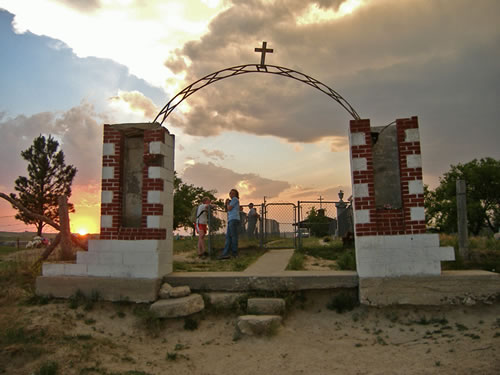
So there is no big surprise to any of this; what is stunning is that anyone is tolerating it — today.
Burying your head in a pillow or claiming not to smell burning human flesh on an industrial scale: that was for the German citizens of the 1930s and 1940s, the ones who had to be marched by United States soldiers through the concentration camps to get a little closer to the smell of death, and see the bodies stacked like cordwood. That’s how thick denial can be.
But not us. Not people like us. Not us latte-swilling liberal hipsters or work-a-day Republicans or whoever.
Well, I’m not so sure, and I’ve never been so sure. I was especially not so sure after speaking with many Germans and asking them about what happened, and they really could not explain it, even though it was their grandparents. All people would say, over and over again, was that they were “ashamed.”
And I want to add this. I am an outspoken person and I’m rarely afraid to express my sincerely held, grounded in reality opinions. Talking about this makes me nervous: the people I might alienate, or who are going to try to convince me that I just don’t get it. My former Holocaust Studies teacher is a Trump supporter. He’s worried what the Arabs might do to the Jews; we cannot have another Jewish Holocaust. I’ve asked him what he thinks of the child prisons in Texas; if he answers, I’ll let you know.
We who might speak up have reason to be nervous. In Ilvers Gehoffen on Feldstrasse, there is a plaque dedicated to four murdered anti-fascists in the Erfurter Resistance Warriors who were imprisoned in April 1933, less than three months after Hitler took office. At the bottom of the plaque is the inscription that, “Their lives should be an example and obligation to all of us.”
Friday, we celebrate the anniversary of the Stonewall Uprising, which is counted as a feat of civil rights. This is significant because during the Nazi era, gay people were among the first to be rounded up and taken to the camps. In Paris, the Marais, a gay district, was the first to be emptied out. So while we’re celebrating this historic event, we might consider how people are being treated today, right now, in our own country — or Stonewall was a hollow and meaningless victory.
The News and the Weather: Eclipses in Progress
Let’s consider the current astrology. Most of the news involves the first eclipse pair across the Cancer-Capricorn axis in nearly a decade. This is likely to accelerate the political process, as the second eclipse (partial, of the Moon) occurs right on top of the Saturn-Pluto conjunction.

Eclipses take place when the Moon and Sun meet along the ecliptic, whether at new phase or full. Eclipses occur at the meeting of the planes of reality known as the lunar nodes, so we have the description of a multidimensional event. Think of an eclipse as a many-leveled alignment to which you can tune your consciousness or trajectory. They are chutes or wormholes in time, and it’s possible to ‘ride’ them as you follow and work with your astrology.
The July 2 total solar eclipse in Cancer comes on the heels of Mars making its way through this sign, which is still at the anaretic stage (very late degree) as of this writing, about to enter Leo on July 1, a day ahead of the eclipse. Mars joins Mercury and Juno in Leo. Mercury stationing retrograde in Leo on July 7 will stir up an interesting conversation and shake out some missing elements of truth like loose change falling out of someone’s pants pockets. (Collecting your coins, and keeping them in a jar, is better feng shui.)
The kicker, though, is Robert Mueller testifying before two different subcommittees of the House of Representatives on July 17, just one day after the partial lunar eclipse in Capricorn. The American public is going to get to see and hear from the former special counsel at length for the first time — the man who ran the investigation against Pres. Trump’s potential involvement in the Russians messing with the 2016 election.
Trump has portrayed Mueller as being halfway between Che Guevara and Charlie Manson, when in fact, he’s an ex-Marine officer, Eagle Scout type, by-the-book federal prosecutor who has loyalty to the law and the nation itself. The American TV audience will now get to see a disciplined, thoughtful guy speaking in an even tone, like he understands something about the issues. The television element is crucial in that nothing is considered real until it’s shown in video format, preferably broadcast over a network or three.
Saturn-Pluto Conjunction Activated
For this eclipse, timed with the Mueller presentation, the Moon passes through the Earth’s shadow right in the neighborhood of the Saturn-Pluto conjunction, the 2020 aspect that is now spinning the world on its finger. If you think of a lunar eclipse as pulling back a veil, then we are going to get a look at what this astrology might contain. It’s a partial eclipse so we will get a partial view, though it will be enough to give us a clue what outcomes are developing.

The Saturn-Pluto conjunction takes place as a one-time event (no retrogrades) on Jan. 12, 2020, and itself inaugurates the presidential election year, and a major phase of American history: the peak of the United States Pluto return.
The Saturn-Pluto conjunction is a once-per-generation event. Think of it as akin to the new phase of the Moon and the Sun, only a slow cycle of two heavy-duty planets, marking the turns of history. The most recent conjunction was Nov. 7, 1982, at the dawn of the “Reagan revolution.”
The most recent opposition, similar to the full phase of the Moon (and the Sun) began Aug. 6, 2001, and arrived with the 9/11 incident. These aspects can have effects that last years or decades; they often represent the most pivotal turning points in history, and we are in the midst of one now.
So we are looking at a world-changing event one way or another, though it also has many people personally feeling the heat: the sense of imminent change; the spring-loaded pause before the lurch forward; the fear of the unknown and unexpected; the sense that something is coming, and wondering whether we can really handle it.
Well, that’s a good question. Can we handle the lives we have today? Look around at the people nearby and ask yourself who actually cares — starting with their own life. I mean who really cares. Because if you do, you need others who do. Integrity requires support. On this plane of reality, we cannot take it for granted.
With love,
![]()
